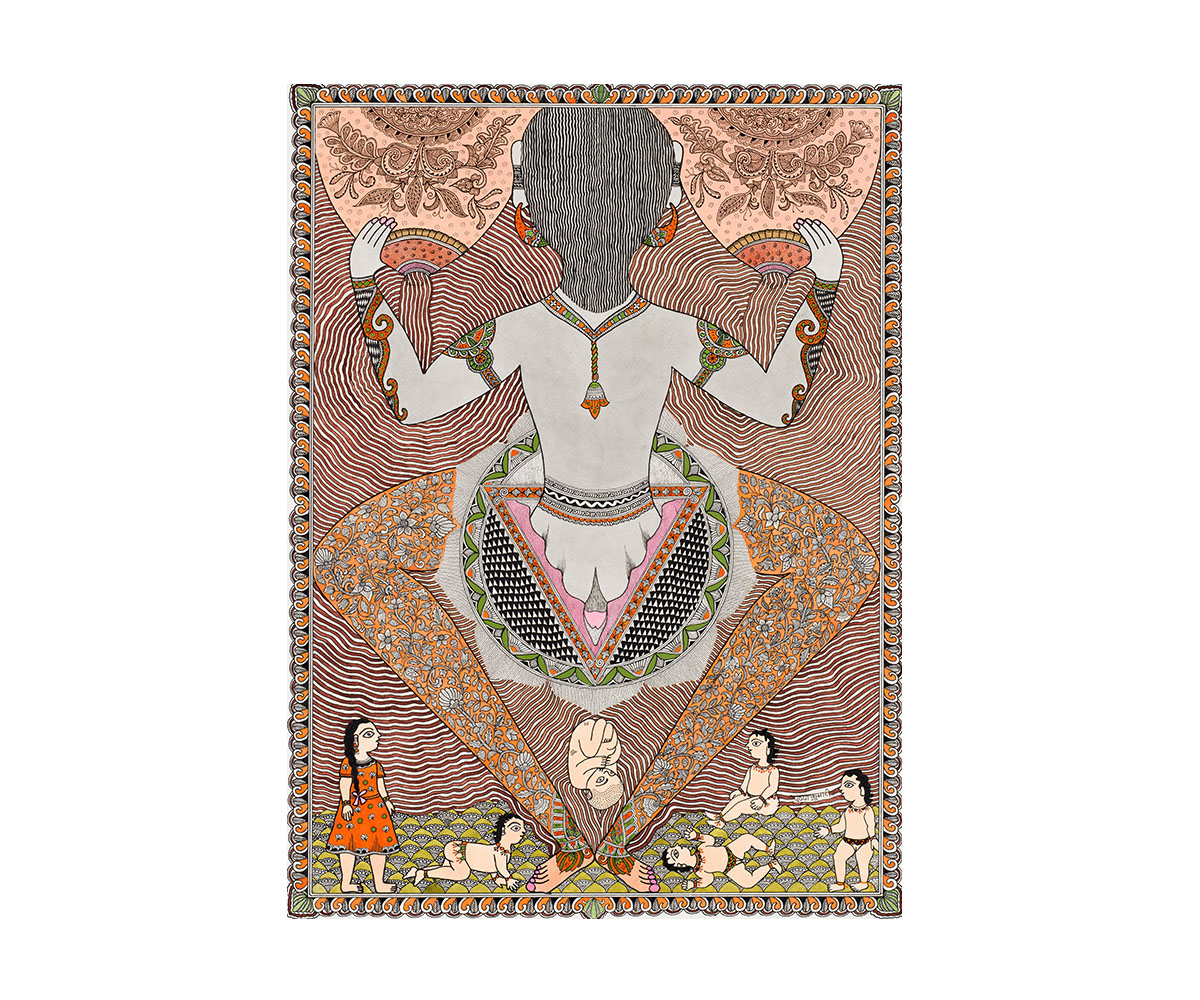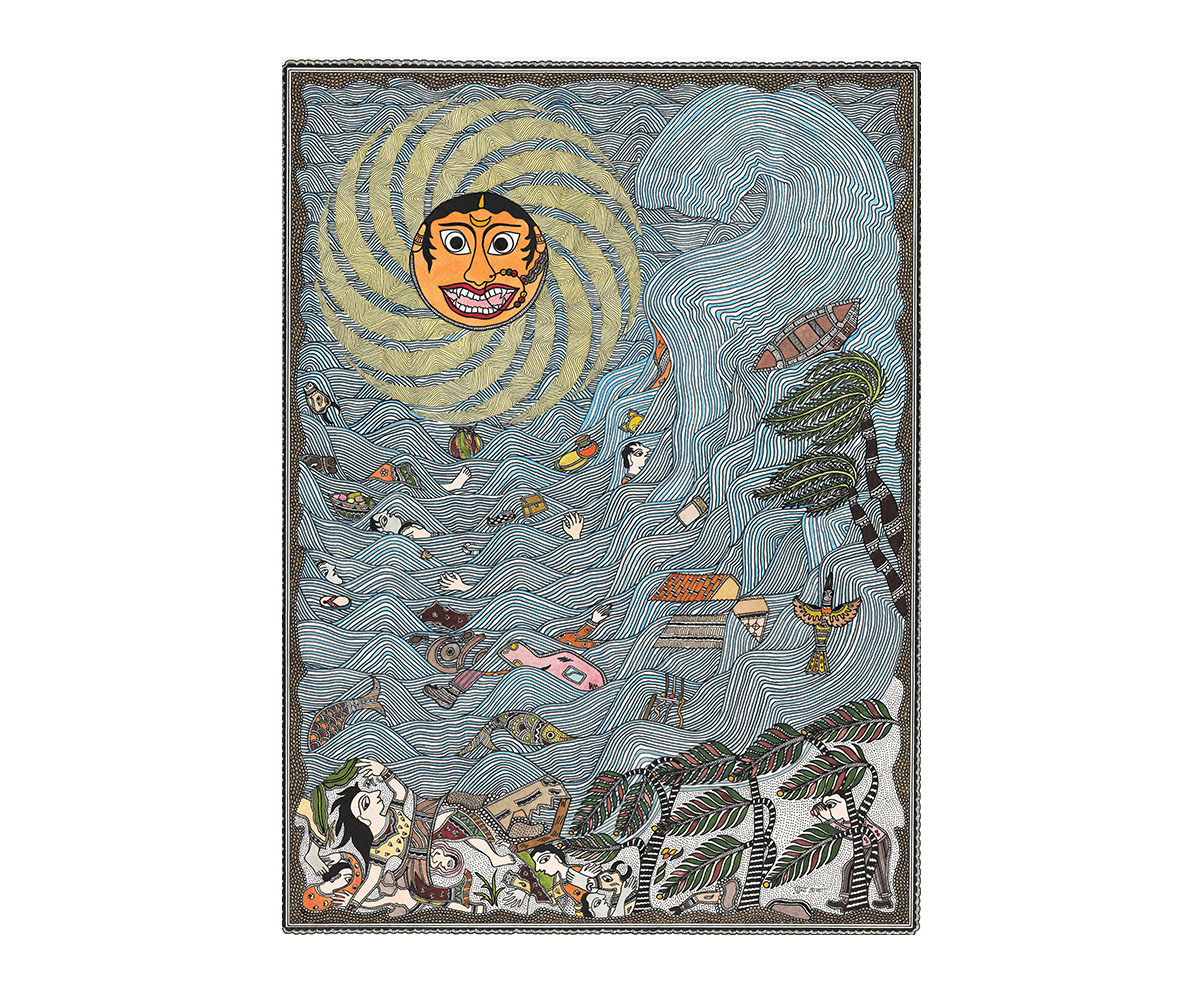ARTICLE
Pushpa Kumari
A second-generation Madhubani artist, Pushpa Kumari was born in the village of Ranti in the Madhubani district of Bihar. Eldest among four sisters, she lived with her maternal grandmother, the renowned Madhubani painter Mahasundari Devi. While Madhubani paintings were a part of the social life of the village wherein women painted walls and floors of their mud-houses on ceremonial occasions, she was exposed to a more individualistic and virtuosic practice through her grandmother. Around the age of thirteen, Kumari began painting full-scale compositions.
While Kumari’s early work was more traditional in its themes and style, she gradually moved away from renditions of kohbar ghars (bridal chambers), deities and stories from Hindu epics and folk tales to create visual commentaries on social and political issues of contemporary Indian society. Her expansive range includes scenes from pastoral village life, a primordial and legendary past and challenges of an urban, modern and globalised life. Kumari’s paintings are built on the traditional idiom of Madhubani painting while embracing fine, minimal and intricate lines. While she has used colour in a few of her paintings, she usually paints using ink with a thread or a pen.
One of Kumari’s earliest works was a mural at the National Crafts Museum & Hastakala Academy, New Delhi wherein she was commissioned to paint extinct or endangered vocations of people from Bihar. Present in the mural, alongside depictions of metal fabricators and potters, is the portrait of her grandmother painting a kohbar. This is one of the first few instances of self-referentiality in Madhubani painting. Throughout her career, Kumari has paid specific attention to the lives of women and female sexuality. Her paintings bridge the divine primordiality of the deity Shakti with the everyday struggles of women. In her painting, Prakriti and Purusha (2015), drawing from Madhubani, where fish, peacocks and serpents represent fertility, love and divinity respectively, she united the myth of creation with the bodily union of man and woman. Her paintings also draw from the philosophy of religious Sanskrit literature such as the Upanishads and the Bhagavad Gita. In Earth Exploitation, she brings forth the story of goddess Prithvi to signal environmental destruction and depletion of earth’s resources. The painting narrates the story of the goddess’s wrath and eventual forgiveness of humankind. Kumari has also made paintings on female foeticide, the HIV AIDS epidemic and the social issue of dowry. In Tsunami (2015) she portrayed the ravaging waters as a destructive force, brought on by the vengeful anger of goddess Kali. More recently, she painted Covid Bride (2020) which centres a bride, wearing a mask and holding the earth in her palms, attempting to save the planet from the spreading disease. Overhead, aeroplanes fly past and underneath, migrant workers make their way back to their homes, having lost work in the cities.
Acclaimed for her stylistic and thematic renewal of the tradition, Kumari’s work has been widely exhibited. She has worked on a number of projects alongside her brother-in-law, Pradyumna Kumar including the 8th Asia Pacific Triennial of Contemporary Art in Australia (2015–16) and the Kochi-Muziris Biennale in 2016. Her work is slated to be part of Sydney’s 23rd Biennale in 2022.
At the time of writing, Kumari lives and works between Delhi and Ranti.
Bibliography
Our website is currently undergoing maintenance and re-design, due to which we have had to take down some of our bibliographies. While these will be re-published shortly, you can request references for specific articles by writing to hellomapacademy@map-india.org.









